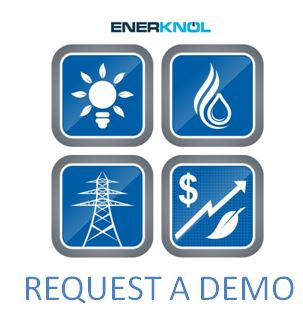Cleanweb is a term that most people have not heard. Many who have heard this mysterious term do not know what “cleanweb” actually is. Since this has become a growing movement and an important part of today’s energy climate, let’s take a dive into this new term and find out how we can participate.
What is Cleanweb?
Cleanweb refers to a growing global movement that leverages Internet, social media and mobile technologies to address resource constraints. Since its debut in 2011, Cleanweb communities have been organizing hackathons around the world to motivate passionate programmers and entrepreneurs to create applications and solutions for problems related to transportation, energy, water, food and waste. The goal is to develop web and mobile apps using datasets from utility, transport and smart grid sectors to promote energy efficiency. New York Energy Week put this in the forefront of their agenda in 2013 with a breakfast series event. See their policy primer here. This was also featured in the June 26th, 2013 edition of Breaking Energy.
While cleantech emphasizes the use of renewables and biofuels to deal with climate and energy issues, cleanweb offers a more leveraged approach by applying information technology to deal with resource constraints and energy efficiency requirements. In addition to infrastructure strategies and policy mandates, infotech tools combined with entrepreneurship could be applied to solve environmental and resource challenges. For instance, both New York state and, more specifically, New York City continue to implement some of the largest and ambitious projects to reach their energy efficiency goals. Energy management software (EWMS) companies are taking full advantage of this awakening by gathering big data. They are compiling it in ways that will help reduce the carbon footprint that building in New York City is leaving. These of companies will ultimately help continue to reduce carbon emissions throughout the U.S.
Unlike cleantech companies that are highly capital intensive and technology-reliant, cleanweb companies can be launched with minimal restraints… The concept of cleanweb multiplies the impact of cleantech by using the power of web, mobile and social media applications. Therefore, cleanweb is considered to be the next stage in cleantech advancement.
Cleanweb technologies
Cleanweb technologies apply innovation to issues related to natural resource constraints, such as clean water, clean air and physical space. Energy apps are drawing the attention of many utilities because of their capability to solve energy efficiency challenges. They have the potential to control energy consumption in real time as developments in smart grid technologies would enable utilities to create mobile apps for customers. The cloud computing industry, an important requirement for smart grid operations, would benefit much from cleanweb.
Energy Management Software (EMS) enables organizations to measure their energy usage and spot operational inefficiencies. EMS companies are compiling vast amounts of energy data to analyze cost-effective methods for energy efficiency. Therefore, EMS is likely to witness rapid growth as governments and business owners gain awareness.
Cleanweb hackathons
 Cleanweb hackathons bring together developers, designers and entrepreneurs committed to optimizing resource use and expediting cleantech development. Participants are encouraged to build applications using web, mobile and social media technologies coupled with application programming interfaces (APIs) and open data sets. These meetings demonstrate the positive impact of applying information technology to resource constraints. They also encourage cities to coalesce entrepreneurship and open data to bring about innovation. Hackathons allow companies and individual developers to quickly build and test applications that solve urban problems.
Cleanweb hackathons bring together developers, designers and entrepreneurs committed to optimizing resource use and expediting cleantech development. Participants are encouraged to build applications using web, mobile and social media technologies coupled with application programming interfaces (APIs) and open data sets. These meetings demonstrate the positive impact of applying information technology to resource constraints. They also encourage cities to coalesce entrepreneurship and open data to bring about innovation. Hackathons allow companies and individual developers to quickly build and test applications that solve urban problems.
Scope
The Department of Energy (DOE) launched an energy data initiative as a crucial effort to empower entrepreneurs to devise new solutions that lead to sustainability and energy savings. DOE’s “Apps for Energy” is a program that motivates developers to leverage data from several sources to provide complete details of consumers’ energy usage.
Backed by DOE, the National Renewable Energy Laboratory has developed Open Energy Information (OpenEI), a global platform for information on renewable energy and energy efficiency. Evolution of OpenEI will motivate additional government agencies, universities, industry and private sectors to join the endeavor.
 With support from NYCEDC and NYSERDA, the NYC ACRE incubator has served as a model for some of New York’s budding cleanweb startups, such as Honest Buildings and ThinkEco. In 2012, New York City became the first municipality to publish energy data on the biggest privately-owned commercial properties. Through the NYC Open Data platform, more than 1,200 data sets are accessible to the public.
With support from NYCEDC and NYSERDA, the NYC ACRE incubator has served as a model for some of New York’s budding cleanweb startups, such as Honest Buildings and ThinkEco. In 2012, New York City became the first municipality to publish energy data on the biggest privately-owned commercial properties. Through the NYC Open Data platform, more than 1,200 data sets are accessible to the public.
Advantages of cleanweb
- It adds the needed infrastructure to transform usage of important resources.
- Tracking energy usage and consumption is vital to cut carbon emissions.
- The venture capital industry could witness remarkable returns from cleanweb, while individual investors can also expect positive prospects by participating in crowdfunding.
- Access to energy data allows software developers from energy and research sectors to use relevant information for innovation and application development.
- Cleanweb hackathons connect developers and people to create applications that leverage the Internet in pursuit of sustainability.
Donovan Lazar | Chief Revenue Officer
dl@enerknol.com | 212-537-4797 ext. 8










